Search
forLearn
5 / 18 resultslearn Thymosin Beta 4
learn Beta Polypeptide
learn Osteopontin
signaling protein that, when suppressed, may grow hair by reducing inflammation and stem cell loss
learn Stemoxydine
chemical from L'Oreal that encourages hair to enter growth phase
Research
5 / 1000+ results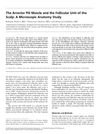
research The Arrector Pili Muscle and the Follicular Unit of the Scalp: A Microscopic Anatomy Study
The study found that hair follicles are above muscle connections in the scalp, which may help protect stem cell areas.
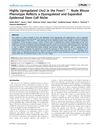
research Highly Upregulated Lhx2 in the Foxn1−/− Nude Mouse Phenotype Reflects a Dysregulated and Expanded Epidermal Stem Cell Niche
The Foxn1(-/-) nude mouse shows disrupted and expanded skin stem cell areas due to high Lhx2 levels.
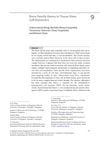
research Runx Family Genes in Tissue Stem Cell Dynamics
Runx genes are important for stem cell regulation and their roles in aging and disease need more research.
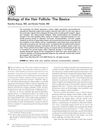
research Biology of the Hair Follicle: The Basics
The document concludes that understanding hair follicle biology can lead to better hair loss treatments.
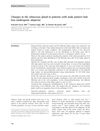
research Changes in the Sebaceous Gland in Patients with Male Pattern Hair Loss (Androgenic Alopecia)
Sebaceous glands in male pattern hair loss patients have more lobules and might cause early hair growth phase shifts.
Community Join
5 / 512 resultscommunity DHT Harms Scalp Microbiome: DHT Itch is REAL
Increased Malassezia and Cutibacterium in the scalp microbiome are linked to higher sebum production and inflammation in androgenetic alopecia (AGA). Treatments include ciclopirox shampoo, benzoyl peroxide shampoo, clobetasol propionate, calcipotriol, minoxidil, finasteride, and dutasteride.

community Compressed part of research of theory of androgenic/anabolitic balance. AGA h-responders analytic. Theory of physio-metabolitic method of anti AGA treatment
The treatment for androgenetic alopecia involves using finasteride and minoxidil with intense exercise and cold exposure to boost metabolism and reduce androgenic effects, potentially leading to hair regrowth. This approach may activate biological pathways for improved hair and overall health.
community New and Interesting HairLoss Studies/Papers/Reviews
Hair loss treatments discussed include Dutasteride with Ketoconazole, tissue engineering strategies, and androgenetic alopecia therapies. Massage doubles follicular retention, improving treatment effectiveness.
community Is There Any Chance Of Cancer In Follicle Neogenesis through Microneedling?
The conversation discusses concerns about the potential risk of cancer from creating new hair follicles through microneedling, due to stem cell division. Specific treatments mentioned include microneedling, caffeine-containing anti-hair loss shampoos, and other unspecified topicals.
community The end of balding: We may have just found the secret to hair regrowth
MCL-1 is important for hair follicle stem cell survival, but its impact on human hair regrowth is unclear. Minoxidil and finasteride are the main treatments, with doubts about new discoveries leading to effective human solutions soon.